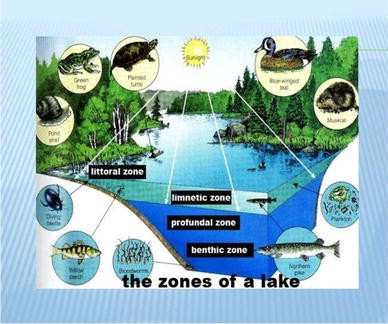Ponds And Lakes Dominant Plants
An abundance reproduction of the aquatic plants in your lake or pond can have harmful effect on its inhabitants. With its microphone-shaped head bulrush is a familiar sight along the banks of streams and lakes where it thrives in the moist and boggy conditions.

Pink Waterlilies Water Lilies Painting Water Lilies Flower Painting Source: www.pinterest.com
Cattails Typha spp sedges Carex spp and rushes Juncus spp are a few grass-like shoreline plants that grow in standing water at the edge of ponds lakes streams and rivers.

Ponds and lakes dominant plants. The fresh water fish are very important to the food chain. Some of the troubles which comes with neglecting proper aquatic weed control. Here are just a few.
Class VI - Alkali Ponds and Lakes are wetlands where deep water is typically not permanently present. If you intend to cultivate populations around your wildlife pond make sure that this plant is native to your area. It is a highly invasive species that if left unchecked will dominate a landscape with the help of its creeping rhizomes.
They flower in the spring and summer. Backyard Ponds and Invasive Species. Small ponds tend to have many phytoplankton and zooplankton.
These wetlands are especially attractive for shore birds. Cattails get their name from their cylindrical flower spikes which can be more than 1 foot long. The dominant plants are generally salt tolerant and include red swampfire and spiral ditchgrass.
There are a couple ways that pond species can be threatening to Canadian habitat. An abundance reproduction of the aquatic plants in your lake or pond can have harmful effect on its inhabitants. Cattails Typhus spp are common in ponds and lakes as well as on the shores of slow-moving streams and rivers.
One of the best ways of bringing more wildlife into an area ponds can be very diverse supporting similar aquatic plants to lakes and even more large invertebrates than rivers. The first being when pond owners no longer have a use for their pond or grow tired of caring for it and think that by relocating their exotic plants and fish into local rivers and streams that they are doing that ecosystem a. In the wild floating sweet-grass is often seen along mudflats riverbanks and the shores of ponds and lakes experiencing temperate climate conditions.
Animal data and illustrations except for the Animal Critters Slide Show come from the Multimedia Animals Encyclopedia. You can learn about additional freshwater animals including insects in the Aquatic Critters Slide Show. Ponds and Lakes Animals Introduction.
May 21 2021 - Explore Melanie Cartwrights board Lakes Ponds Plants on Pinterest. This species can quickly colonize these areas and become a dominant weed. M any interesting animals live in and around ponds and lakes.
When cattails are in flower they are not easily mistaken for other aquatic plants. Algae water lilies cattails and ducktails are a few of the plants that live in or around lakes and ponds. Alkali wetlands are characterized by a pH above 7 and a high concentration of salts.
Class VI - Alkali Ponds and Lakes are wetlands where deep water is typically. Snails Reproduce Slowly It is important to maintain a balanced ecosystem within your pond. Lakes and ponds have different ecological communities.
Juncus effusus is an early growing perennial that establishes along shorelines in shallow water less than 1 foot deep. This depends on their size location and chemical characteristics. Cutting the bulrush above the water line is ineffective as it will grow back thicker and stronger the following year.
An ecological community is a group of plants and animals living in the same area. Cattails are often the dominant plant species in marshes retention ponds and ditches. The leafless stems grow 1-3 feet.
Snails are also the most dominant grazers of algae and aquatic plants outside our ponds in lakes and rivers across North America. Soft rush is a popular pond plant because it is short enough to fish over and helps prevent the encroachment of cattails. Undesirable aquatic plants disturb the vital balance of nutrients and oxygen in the water body and can wreak havoc on outside activities.
Each plant supports dense clusters of smooth cylindrical stems. Permits may be required. Examples include common cattail Typha latifolia native to.
See more ideas about plants water lilies lily lotus. Phytoplankton are microscopic free-floating plants. Especially where water levels fluctuate.

Water Quality Assessment Of Lake Water A Review Springerlink Source: link.springer.com

Pin On Lakeside View Source: www.pinterest.com
5 Plants For Your Pond Wisconsin Lake Pond Source: www.wisconsinlpr.com

Tilapia A Basic Intro To The Different Generic Classifications Also A Mating Guide To Get A Mostly Male Population Fish Farming Aquaponics Hydroponics Source: www.pinterest.com

Lakes And Ponds World Biomes The Wild Classroom Source: thewildclassroom.com

Aquatic Botany Botany Aquatic Plants Infographic Source: www.pinterest.com
